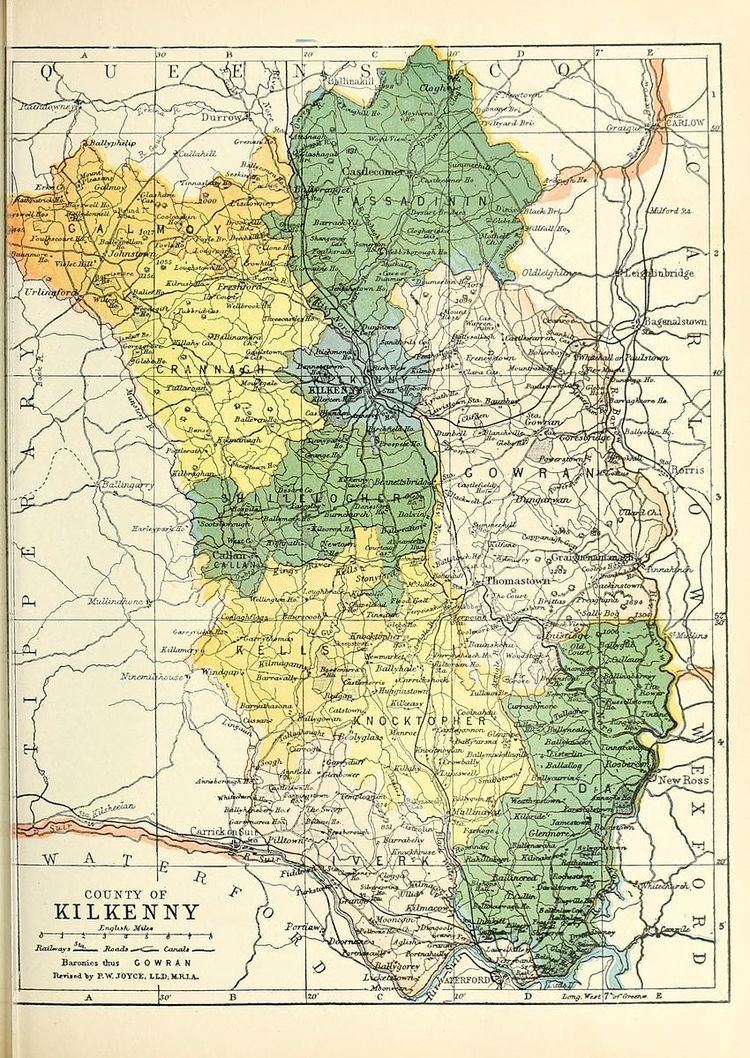Sovereign state Republic of Ireland | County Kilkenny | |
 | ||
Crannagh (Irish: Crannach, meaning "Abounding in Trees, or Woodland"), sometimes written Cranagh or Granagh, is a barony in the north west of County Kilkenny, Ireland.
Contents
Geography
Cranagh contains the town of Freshford and the settlements of Odagh, Threecastles, Woodsgift, Kilmanagh, Kilmanagh, Lacken, Rathmoyle and Tullaroan.
Crannagh contains the civil parishes of Freshford, Odagh, Ballycallan, Ballylarkin, Ballinamara, Killahy, Kilcooly, Killaloe, Kilmanagh, Clomantagh, Coolcraheen, Fertagh, Garranamanagh, Clashacrow, St. Canice, Sheffin, Tubbridbritain, Tullaroan, and Tullaghanbrogue.
The rivers Nore and Nuenna flow through Crannagh. There is a turlough called the Loughans which is an area of Special Conservation, and the nature reserve of Ballykeefe Wood.
History
The "Barrony of Cranagh" appears for the first time in a "Booke of the ploughlands", otherwise called "'Horsemen's beds' in County Kilkenny" in the year 1587. The barony probably dates from a much earlier period.
In 1609 Sir John de Rocheford of Killary and George St. Leger of Woncestown (Bouncestown) were returned as Constables of the barony.
Cranagh was recorded in the Down Survey (1655–1656). and on Griffith's Valuation (1864). Parts were in the Poor law unions of Callan, Kilkenny, and Urlingford.
In 891 Grane Hill was mentioned in the Annals of the Four Masters "A slaughter was made of the Eóganachta at Grian-Airby, by the Osraighi". The Graces were Barons of Courtstown.
